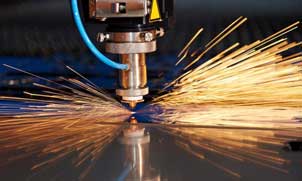Learn when to use nickel and how to meet its challenges.
Although Continental Steel & Tube does not machine nickel alloys, we wanted to provide a useful article to our current and future customers who do.
Nickel as a material has a long history in countless applications, from its use as a plating, to an element in super alloys, it provides characteristics that have benefitted many industries. When used as a primary alloy material in high specification steels, nickel transforms its role from aesthetic to that of a strength-giving component that also brings in corrosion resistance.
This ideal combination has turned nickel into a metallurgical component with great impact in aerospace, power generation, turbine, and other high-value applications.
Deforming challenges
Using high nickel alloys as a manufacturing material requires that process managers, machinists, and designers understand the issues nickel brings to the fabrication space. As it does not weaken or deform easier at higher temperatures, as observed with other types of alloys, nickel is more difficult to deform by high precision machining processes.
This single factor has kept some users away from nickel alloys, forcing their particular applications to suffer onward with inferior materials. In reality, it is possible for the majority of manufacturing environments to adapt to nickel machining with ease.
A Common Misconception
The reason that nickel alloys are difficult to machine, whether by cost or failure rate, is rooted in a flawed approach and inappropriate tooling: machinists, managers, and process planners treat it like high strength, heat treated alloys.
While similar in physical properties, these materials are a different animal at the literal cutting edge. Heat treated materials, especially austenitic ones, have a higher tendency to chip and break away under shear forces, like those used by the cutting tools in machining processes.
This quality is further amplified by the heat buildup that occurs in machining. Therefore, a single set of middling quality tools can be used to work on some otherwise high strength materials.
Uniform Strength Qualities
Nickel alloys express their strength qualities more uniformly – shear, tension, and compression forces are all well resisted by high nickel alloys. There is no “weak point” that can be taken advantage of for the cutting process.
Simply put, nickel alloys will require higher quality tools, featuring stronger build materials and sharper cutting abilities. Machining systems will have to be run at slower linear speeds (feed rate), and at reduced tool RPM.
Some systems will simply not be rigid enough to handle high nickel alloys. Cutting depths should be kept to a minimum, which may require part design revisions. Above all, longer cycle times will need to be specified. Rushing nickel alloys will only result in wasted material and ruined tools.
If approached smartly, nickel alloys can transform the strength profile of your parts manufacturing without incurring excessive costs. The key is in the preparation – budget time and tools for your nickel alloy process steps and the stereotypes surrounding this traditionally frustrating material will disappear.

